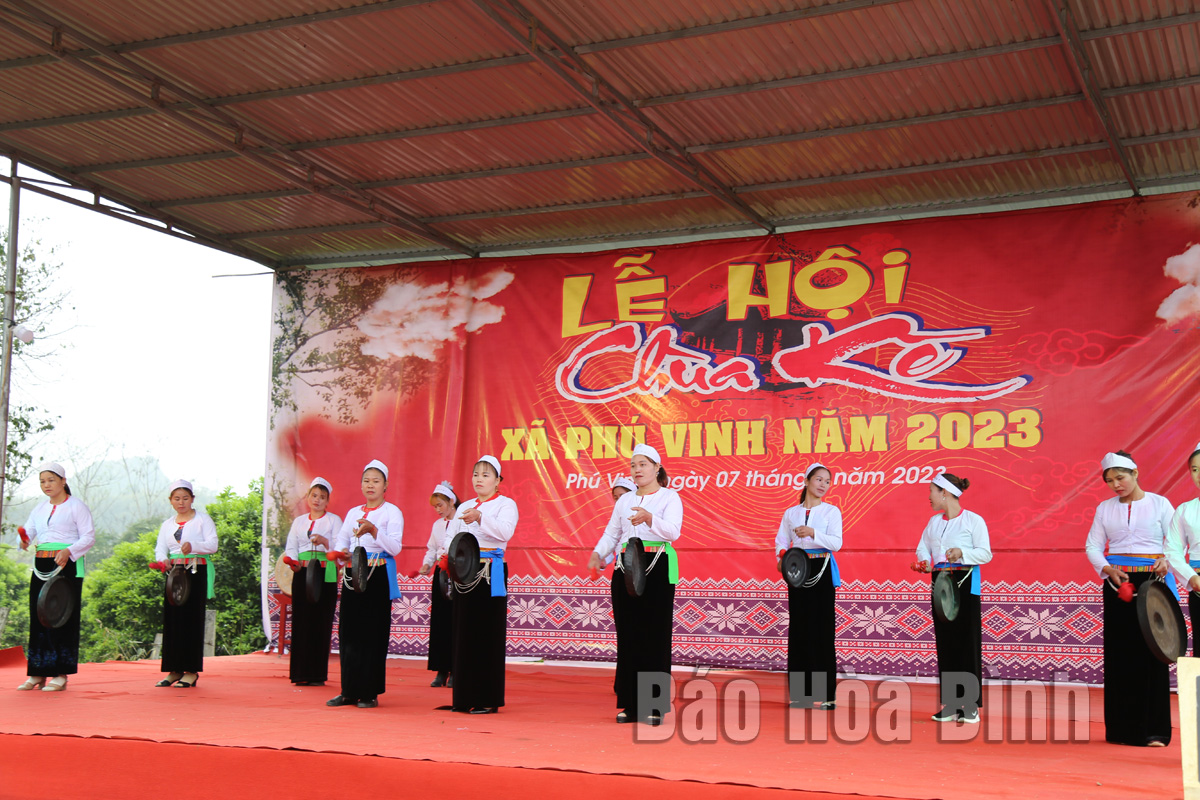
(HBO) - In 2 days, March 6th and 7th, the fesstival of Ke pagoda in 2023 took place in Phu Vinh commune (Tan Lac).

The performance of Muong gongs at the festival.
The festival of Ke Pagoda is the first clearing ceremony of the year, according to the Muong language is "Le tha Cha chua”. The festival is a religious and community activity associated with wet-rice agriculture in order to return to the roots and express the gratitude to the Buddha and the village lords who have helped the people to build Ke ditch to bring water to the fields, teach the people to build the land and establish Muong area. It is also to wish for a year of favorale rain, the peaceful wind, which is full of happiness. The festival is also an opportunity for people to meet, exchange, tighten the solidarity and propagate the preservation and promotion of the national cultural identity in the customs and culinary life of the local people.
At the festival, the delegates and the local people had an opportinity to watch the concert of Muong gongs and the special cultural performances imbued with the national identity; visiting the stalls displaying the traditional handicraft products, the ethnic musical instruments and the cuisine. The festival organizing board organized the competitions in sports and folk games such as aray fighting, cotton ball throwing, stall dancing, swings, stilt walking, volleyball, etc.
With an increasingly vibrant and widespread emulation movement aimed at building cultured residential areas and cultured families, Yen Thuy District has been making steady progress toward improving both the material and spiritual well-being of its people, while fostering a civilized, prosperous, beautiful, and progressive community.
Once lacking recreational spaces and community facilities, Residential Group 2 in Quynh Lam Ward (Hoa Binh City) has recently received attention for the construction of a new, spacious, and fully equipped cultural house. The project followed the model of state support combined with public contributions in both labor and funding.
The "All people unite to build cultural life" movement, which has been effectively integrated with Kim Boi district’s socio-economic development goals, is fostering a lively spirit of emulation across local residential areas, hamlets, villages, public agencies, and enterprises. In addition, through the initiative, traditional cultural values are being preserved and promoted, while community solidarity and mutual support in poverty reduction and economic development are being strengthened.
A working delegation of the Hoa Binh provincial People’s Committee led by its Permanent Vice Chairman Nguyen Van Toan on June 11 inspected the progress of a project to build the Mo Muong Cultural Heritage Conservation Space linked to tourism services in Hop Phong commune, Cao Phong district.
Born and growing in the heroic land of Muong Dong, Dinh Thi Kieu Dung, a resident in Bo town of Kim Boi district, in her childhood was nurtured by the sweet lullabies of her grandmother and mother. These melodies deeply imprinted on her soul, becoming an inseparable part of her love for her ethnic group's culture. For over 20 years, this love for her hometown has driven Dung to research, collect, and pass down the cultural values of the Muong people to future generations.
In the final days of May, the Ethnic Art Troupe of Hoa Binh Province organized performances to serve the people in remote, mountainous, and particularly disadvantaged areas within the province. These were not just ordinary artistic shows, but they were the meaningful journeys aimed at spreading cultural values, enhancing the spiritual life of the people and contributing to the preservation of ethnic minority cultural identities.



